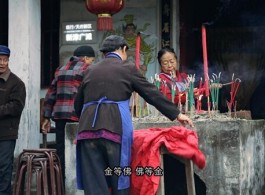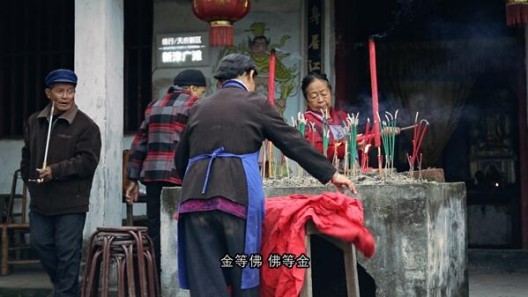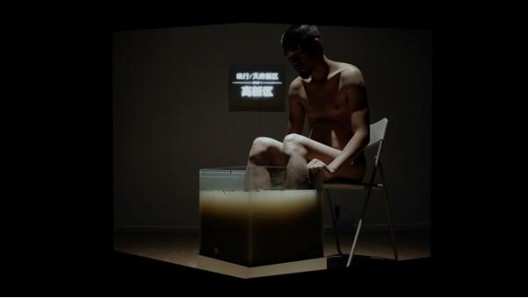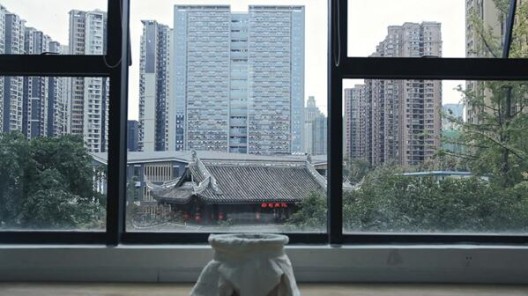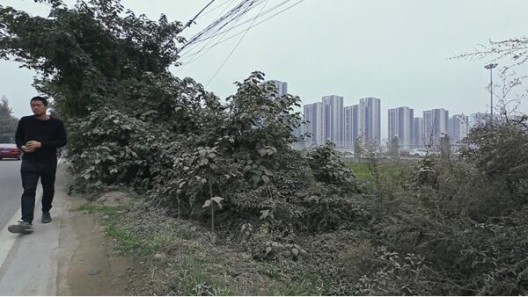Opening: 3:00-6:00pm, Jan.9th, 2016 (Saturday)
Artist: Lin Wei-lung
Media: Performance/ Video installation/ Documentary/ Photography ( Laser printing paper/ Crystal mount)
Photograph by Ran Maoqiu
From August 18 to November 14, 2015, Taiwanese artist Lin Wei-lung undertakes a residency at A Thousand Plateaus Art Space in Chengdu with an Asian Cultural Council grant. At the end of his residency , Ling Weilong will realize a local creation project Circulation / Tianfu District in cooperation with artists in Chengdu. We will present related artworks and documents of this project.
Words of artist: about Circulation / Tianfu District performance and documentation project
Coming from afar to visit Chengdu, I attempted to find an entry point into contemporary life in the city. Because I focus on contemporary life and physicality, my inspiration is rooted in a closeinvestigation of my surroundings. Between environment and life, I use specific actions to create significance. When I was invited to come to this Chengdu residency as part of the cooperation between the Taipei International Art Village and A Thousand Plateaus Art Space, I first looked for Chengdu on a map. Imagining that I would be in residence at a gallery outside the rings of high speed roads, I prepared myself for a remote suburb. When I arrived in Chengdu, I was stunned by the modern city stretching to the horizon. Tianfu District is one of China’s swiftly growing areas, but in fact, no long ago it was still the village I imagined. My apartment faces south. Every day I look at the murky sky, listen to the raucous sounds of construction, and smell the concrete. Although I was not present when the city began to spread to this village, I have witnessed a portion of it’s skyline-altering development.
Chen Tianjin and Cao Minghao’s Waterways Plan seeks to discuss change’s in the city’s culture by examining changes in the Chengdu water system. One of the sites for this project is Xinjian Guangtan Village. Located in the southwestern part of Tianfu District, Xinjian’s main industry in years past was agriculture. Due to geographical factors and the development of the shipbuilding industry, it became an important travel center of Western Sichuan and a center of shipbuilding for the Minjiang river and Chengdu waterways. Towering buildings began to appear as a result of the modernization of Xinjian, and the features of the village and landscape were swiftly altered. Guangtan village is built on soil deposits of the Minjiang river. The village is surrounded by water on three sides, and the black soil is quite fertile. The growth of the sand industry in the 1990s caused significant changes along the banks of the river. Instead of being used for cultivating crops, soil became a construction material for urban areas. The rush to finish large construction works changed the formerly cloudy sky to grow dense with smog.
About Lin Wei-lung’s Performance and Documentation Plan
I will attempt to take as much of the riverbank soil as I can carry and walk around Tianfu District. I will start from the local religious center, Longwang Temple, and depart on the morning of September 19th under the lunar calendar. Using my own body to respond to the modernization process which turns village to city, I will ultimately return the soil to the village. Ran Maoqiu will use video to document the performance and of the villager’s thoughts on changes in their environment.
Grew up in Taipei, currently works there
Graduated from the National Taiwan University of Arts, Fine Arts Department
Taipei National University of the Arts Fine Art Research Group
Studio assistant for artist Wu Tien-Chang
Founder of Lane 216, East, art documentary studio, responsible for directing and producing
Lin Wei-lung’s work and thinking originates in the body, and his early works included a series of works documenting the body. Recent works have been based on a process located between body and material. Performances are often long-term, returning repeatedly to a work to accumulate actions. Extended performances make it possible to record into the body’s memory and use the body as an angle for viewing the world.
In addition to his own artistic practice, since 2012 Ling has worked in art documentation, using the camera’s lens to allow the dissemination of artistic messages, acts, and exhibitions.
Whether through artistic works, documentary collaborations, or travel, Ling seeks to further examine and imagine the viewpoints and physical understandings of those living in Asia.
Recently he has received and Asian Cultural Council grant and undertaken a residency at A Thousand Plateau’s Art Space in Sichuan, China.
Co. Director Introductions:Ran Maoqiu
Ran Maoqiu (1987-) was born in Chongqing, China. He currently lives and works in Chengdu. He received his Bachelor’s degree from the Chengdu University of Electronic Science and Technology (2008-2012). In 2012, he founded Yixuan Video Studio, focusing primarily on independent films, documentaries, and experimental videos. In addition, he has assisted in the editing process for many important exhibition videos. From 2009 until today, he has completed post production on more than ten short films and documentaries. His short film,”Earth Preservation” received an award for outstanding graduation work.



